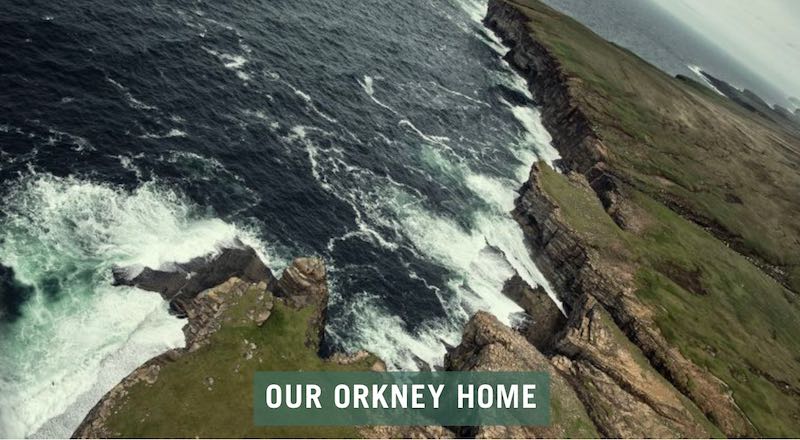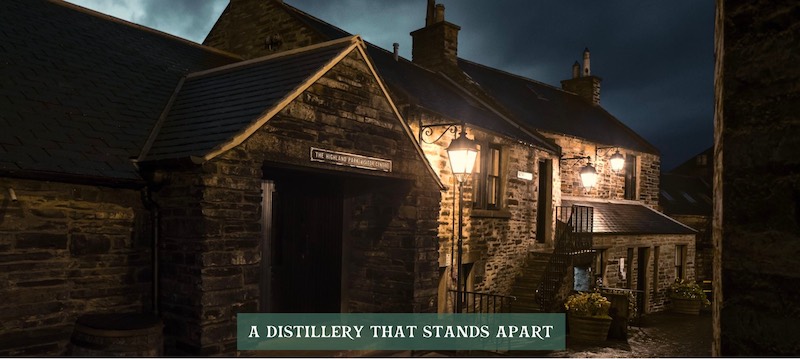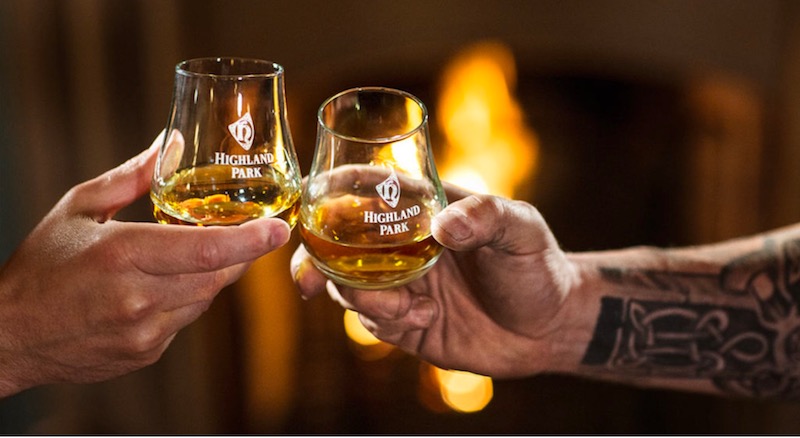Explore the Viking Souls of Highland Park

Picture Credits: www.highlandparkwhisky.com
Highland Park Distillery is located in Kirkwall, Orkney. Known as the most northern whisky distillery in Scotland, its history is shrouded in mystery as to who the actual founder was.
Orkney, the Land of the Vikings

Picture Credits: www.highlandparkwhisky.com
Historically, a succession of Viking Earls ruled Orkney from 800AD to 1468. The group of 70 islands swept into the embrace of the Vikings in the early 9th century and remained so until 1468. King Christian I of Norway and Denmark gifted the islands to Scotland as part of Princess Margaret’s dowry for her marriage to James III, King of Scotland in 1468. While it ended the Viking’s rule over Orkney, the roots of the Vikings continue to influence the people till today. The Vikings who had settled on the islands become part of the Orcadians. The descendants of the Vikings are proud of their heritage, and live to bring glory and honour to their Viking roots.
History of Highland Park Distillery

Picture Credits: www.highlandparkwhisky.com
In official records, a priest by the name of Magnus Eunson first distilled whisky on the site of Highland Park Distillery in the 1790s. He was a respectable member of the Orcadian society as well as a priest. He ran an illicit whisky trader at night and legends had it that he hid the whisky under the pulpit in his church. When excise men eventually caught up with him in 1798, charges against him were dropped mysteriously after a short time. Eunson escaped justice.
David Robertson officially founded Highland Park Distillery in 1798. He bought the High Park estate and built Highland Park Distillery. After running the distillery for a few years, he sold it to a syndicate in 1816. Interestingly, the syndicate included Eunson’s arresting officer, John Robertson and another former exciseman, Robert Pringle. The syndicate built up the distillery in 1818 and the current premises dated back to those eras.
William Stuart (who owns Miltonduff) bought Highland Park Distillery in the 1870s. It finally stabilised under his care and in 1885, James Grant (previously the manager of Glenlivet) joined Stuart as his business partner. Grant took full control of the distillery in 1895 who proceeded to expand the distillery and built up a great relationship with Robertson & Baxter (R&B).
In 1937, Highland Distillers (who had shares in R&B) took over Highland Park Distillery. Highland Distillers was the owners until the turn of the century, where they became the object of take-over. Edrington Group acquired Highland Distillers and Highland Park was taken into the folds of the Edrington Group. Since then, Edrington Group makes efforts to uphold Highland Park Distillery as a distinctive whisky maker. Today, Highland Park is the only Island distillery in the Edrington Group profile.
Highland Park Whisky-Making Process

Picture Credits: www.highlandparkwhisky.com
Highland Park builds its whisky-making process on 5 keystones of production. They are proud of their traditions because no other distilleries use all five keystones.
Keystone 1: Aromatic Peat
Highland Park recognises the importance of peat in their whisky-making process. They obtained their peat from Hobbister Moor, located 7 miles from the distillery. Hobbister Moor has no trees, as Orkney does not have a conducive environment. As a result, the 9,000 years old peat used by Highland Park is rich in heather.
Keystone 2: Hand Turned Floor Malting
Hand-turning the malt by hand is a labour intensive method that many distilleries no longer employ. At Highland Park, they take pride to hand turn their malt because they believe in the traditional process when producing the distinctive aromatic smokiness of their whiskies. Highland Park turns their barley by hand every 8 hours, 7 days a week. The turning maintains a constant airflow and the right amount of moisture to fully absorb the intense smoke from the peat.
Keystone 3: Sherry Oak Casks
Highland Park is obsessed with their casks. The staves are cut from American and European oaks before shipping to Jerez in Southern Spain. These staves are made into casks and filled with Oloroso sherry. After a minimum of 2 years maturation, these casks are emptied and shipped back to Orkney. Highland Park uses these casks to fill their whiskies for maturation.
Keystone 4: Cool Maturation
Highland Park is in a perfect location for whisky maturation. Orkney has a temperate temperature, reaching highs of 16°C in summer and lows of around 2°C in winter. Therefore, the maturation of their whiskies takes place in a long, cool and evenly paced environment.
Keystone 5: Cask Harmonisation
Cask harmonisation is crucial in creating a balanced whisky. Highland Park’s Master Whisky Maker, Gordon Motion, makes sure that every release of Highland Park has the chance to rest in their vatting tun for at least a month before bottling. The time allows the newly married spirit to harmonise into a balanced whisky.
Highland Park Whisky Collection

Picture Credit: www.highlandparkwhisky.com
Highland Park has a wide range of whiskies to suit every palate. Below is a list of their current expressions that are still available from the distillery.
Aged Whisky Expressions:
10 Years Old – Viking Scars (New Packaging)
12 Years Old – Viking Honour (New Packaging)
18 Years Old – Viking Pride (New Packaging)
25 Years Old
30 Years Old
40 Years Old
Special Releases and Limited Editions
Magnus
Dragon Legend
Valkyrie
Rebus30 10 Year Old
Svein
Einar
Harald
Sigurd
Ragnvald
Thorfinn
King Christian 1
Ice Edition 17 Year Old
Fire Edition 15 Year Old
Highland Park Today
Highland Park continues to be the driving force in Orkney as they commit to keep the Viking’s proud heritage. In the regular business sense, Highland Park is also a forerunner as Edrington Group focuses on making it more famous.


